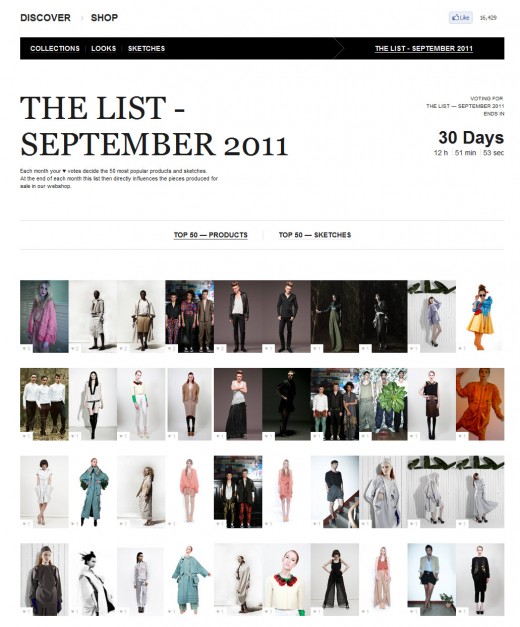Lookk Again: Why Net-a-Porter’s Biggest Investor Is Backing Demand Driven Fashion

When we first covered Garmz, the site was a place where anyone with a sketch and a bit of vision could see their idea actually put into production. Today, they’ve rebranded and relaunched as LOOKK, with backing from a few notable investors and an expanded offering for (slightly) more established designers. {Signature9 Mediawire}
One of the investors backing the demand driven production model that LOOKK offers is Carmen Busquets, one of Net-a-Porter’s earliest investors. Busquets’ bet on e-commerce as a place for luxury brands was so early, in fact, that she ended up with nearly one-third of the company by the time Richemont acquired it for £350 million (nearly $570 million at current exchange rates).
In a statement provided to Signature9, Busquets explains why she thinks LOOKK could be the next Net-a-Porter.
“LOOKK felt to me like the natural evolution for technology in fashion – something I wanted to explore following Net-a-Porter,” she said. “Its power is in its ability to help designers start and, crucially, sustain their fashion career – not only paying them a commission on their designs, but also covering production costs and helping them to market themselves.”
But it’s the opportunity to use votes and comments as indicators of future sales success that appeals to her as a matter of business.
“The detailed market data available through LOOKK means we can predict demand for pieces much more efficiently than with a traditional model,” Busquets explains. “This, coupled with shorter production cycles, means we can produce smaller, demand-driven, batches – significantly reducing waste, and therefore costs.”
When we first covered Garmz at LeWeb, we noted that funding and production are two areas designers can struggle with. As LOOKK, the site expands to designers who may be advanced enough to have samples and some knowledge beyond conceptualizing a product. Not that there’s anything wrong with concept – one of our favorite pieces was conceived by someone with no formal training at all – but it opens the process to a group that’s still largely unorganized when it comes to sales and marketing.
There are challenges to success for LOOKK though: while Net-a-Porter struggled to find receptive brands at the start, they have the benefit of promoting clothes from well known designers who have large sales and marketing machines behind them. For emerging designers, who don’t have the benefit of celebrity placement and million dollar advertising and publicity campaigns, LOOKK has to drive the sales and marketing machine online, but that’s tough enough with one brand – nevermind 5 or 6 (or more).
Plus, while being first isn’t easy, Net-a-Porter was essentially proposing a different channel for an existing model (they buy, and sell). Consumer feedback and voting, while exciting from a business perspective, doesn’t fit within the normal fashion cycle. It will likely require a few breakout hits before being fully embraced by aspiring designers who find it easier to understand a straightforward purchase order.
That said, the fact that LOOKK offers production and feedback is a significant incentive for designers, and a significant challenge to competitors. LOOKK could also grow to be an incubator of sorts for fashion – Â think Y-Combinator or Seedcamp (which funded the company in 2010) – an area where there’s almost no competition, and an area that’s ripe for disruption.
Other investors include Dave McClure, a noted Silicon Valley angel who also founded incubator 500 startups, Kima Ventures and Eden Ventures among others.
Disclosure: I served as a marketing advisor to LOOKK prior to launch. This post was not submitted to or reviewed by LOOKK prior to publication, and solely represents the opinions of the author.
